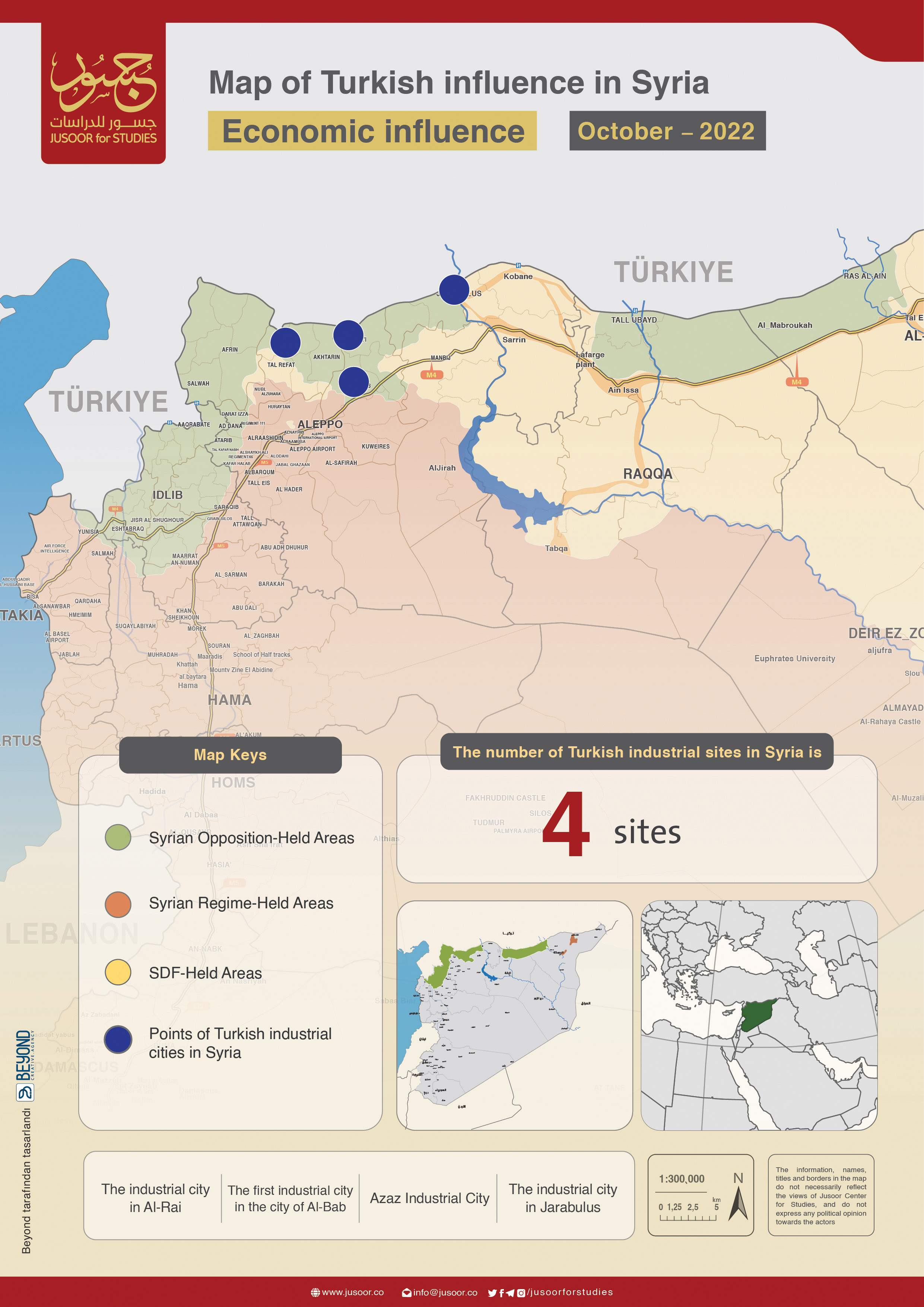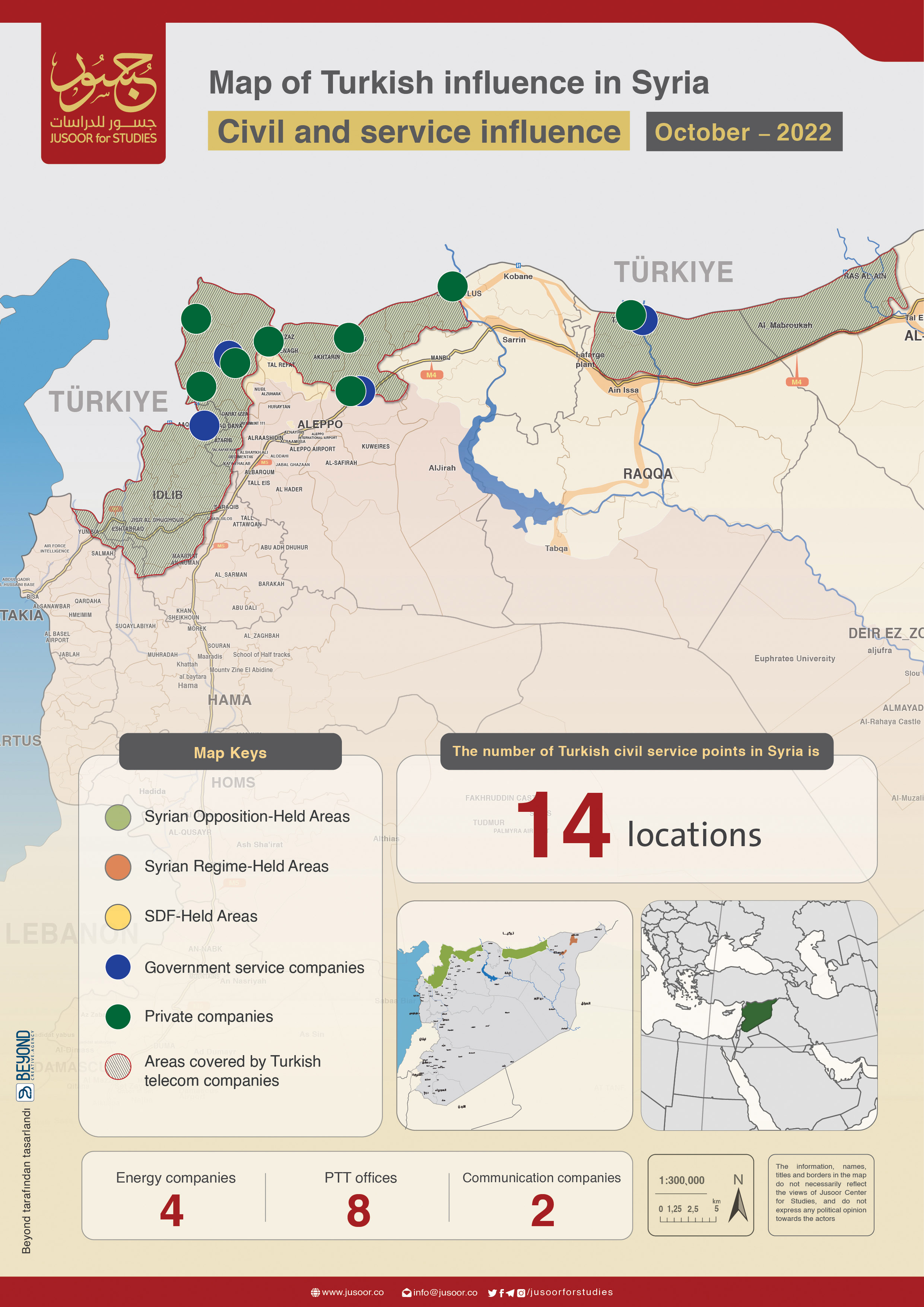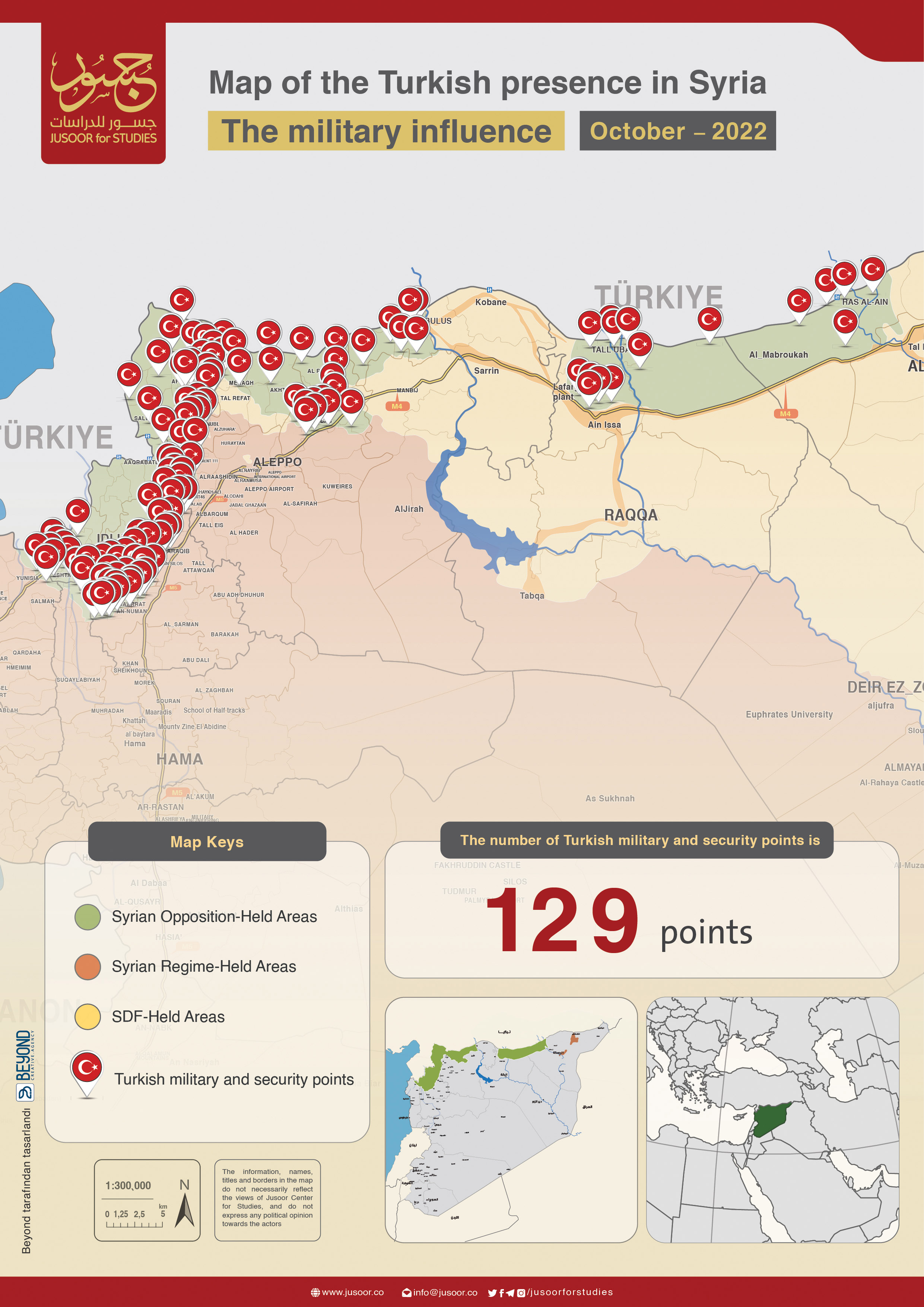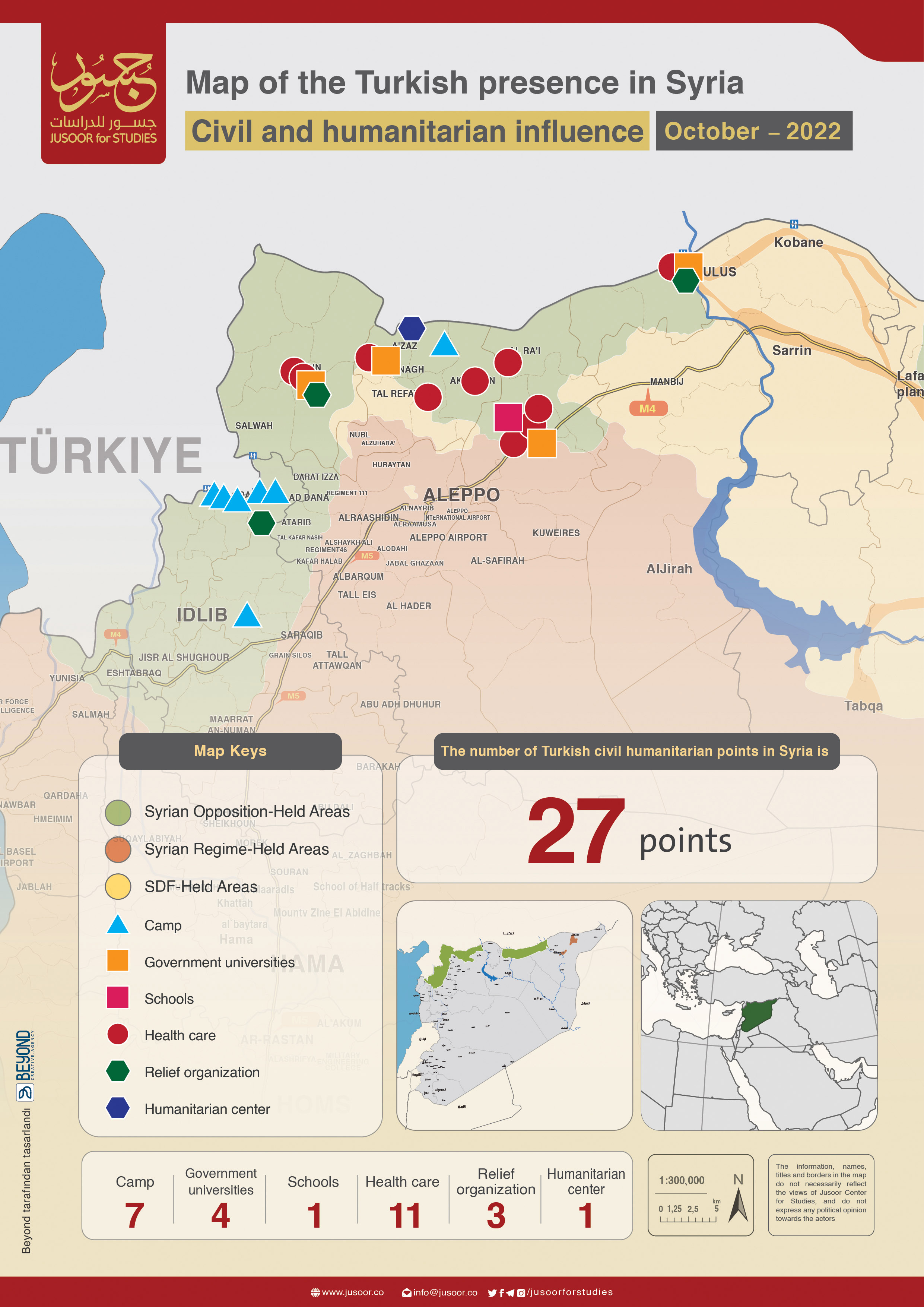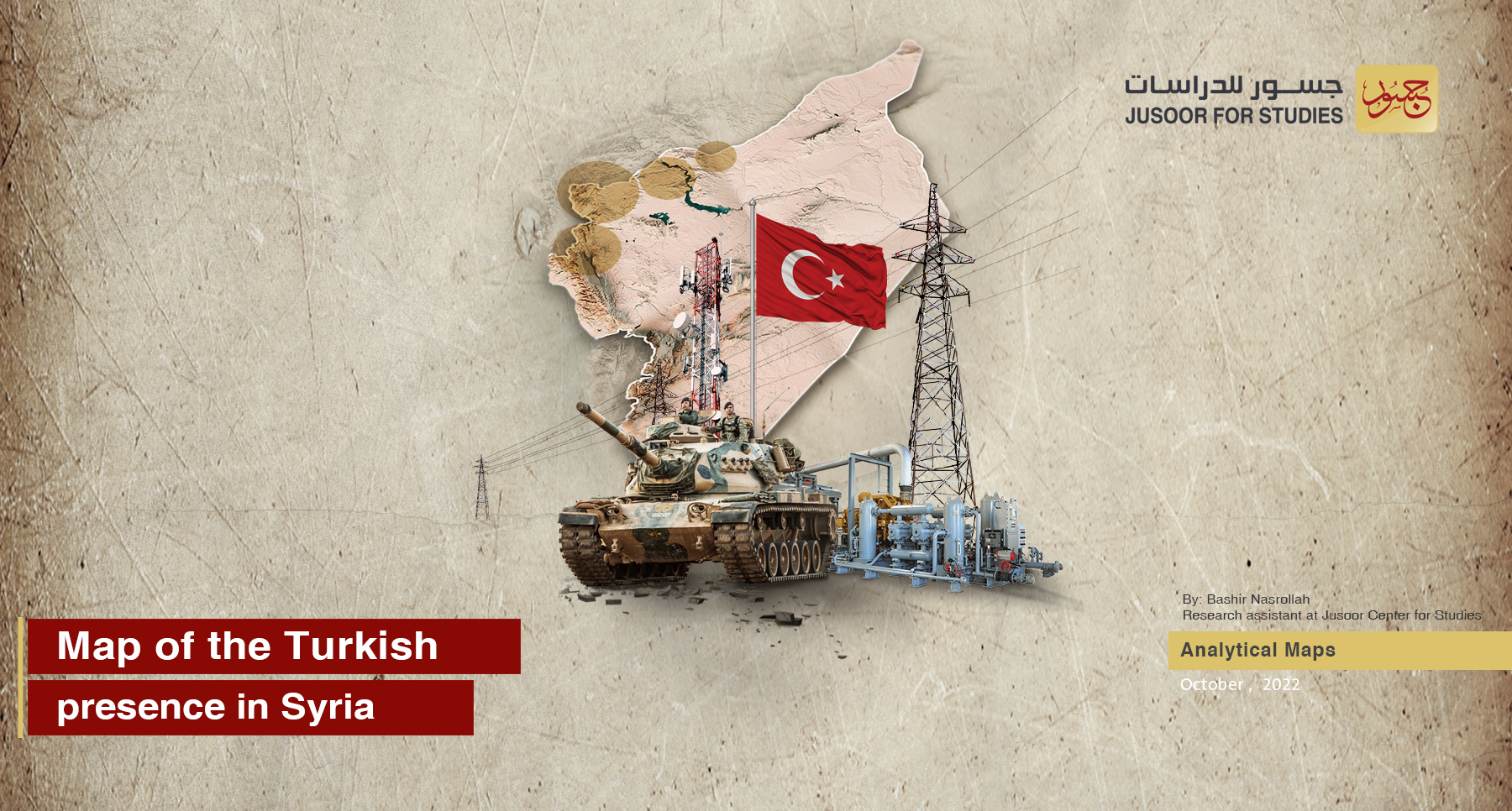Map of the Turkish presence in Syria
It has been 6 years since the beginning of Turkey's entry into the Syrian territories, since the Turkish forces penetrated into the cities of Azaz and Jarabulus, north of Aleppo after the operations against ISIS. Soon, the size of the deployment and arming of these forces in Syria increased and exceed the northwest of the country and consequently reached the northeast.
Although Turkey's entry into Syria was linked to the issue of combating terrorist organizations, its spread was gradually linked to political goals, Some of which is the transition to an elected Syrian government that represents all Syrians, with the aim of ensuring the return of refugees from Turkey, given that the collapse of the security situation was mainly linked to the undermining of the central authority in Syria, which large segments of the Syrian people no longer see as a legitimate one. With the absence of the central authority, terrorist organizations with cross-border activities such as ISIS and the Kurdistan Workers Party (PKK) have become active on the Syrian territory - especially those adjacent to the Turkish borders.
Over the past periods, Turkey has sought to provide the necessary political and legal cover for the deployment of its forces in Syria. Ankara provided this cover through the Astana process, in which it is considered a guarantor of the ceasefire and de-escalation. Moreover, Turkey has always affirmed its unwillingness to withdraw its forces from Syria in light of current conditions.
Jusoor Center for Studies presents new analytical maps on Turkey's influence on the Syrian lands towards the end of 2022, showing the number of Turkish military points and bases, their areas of deployment and location, in addition to analyzing their strength and the nature of their tasks, in an attempt to anticipate their future.
To read the full report, download the PDF version
